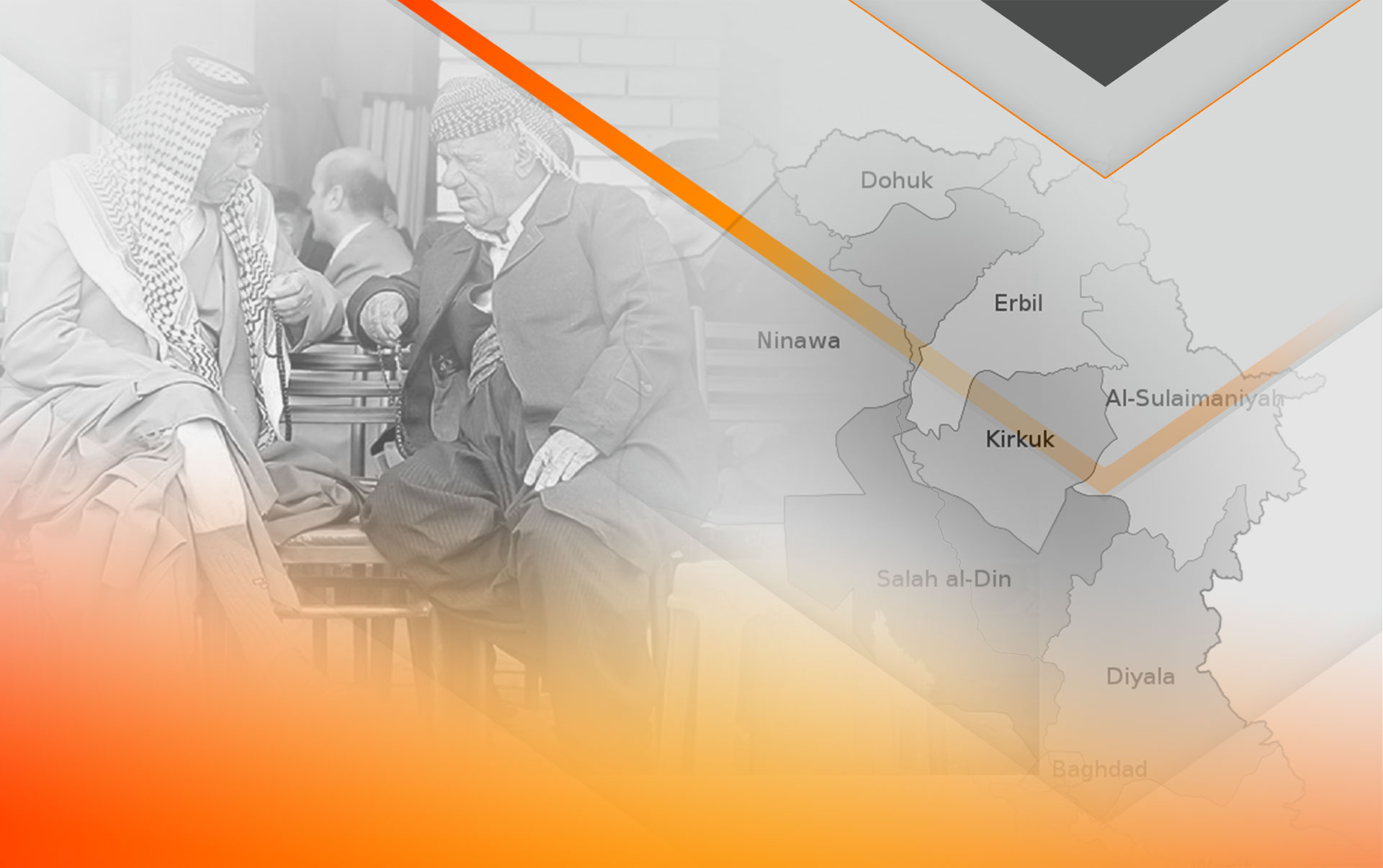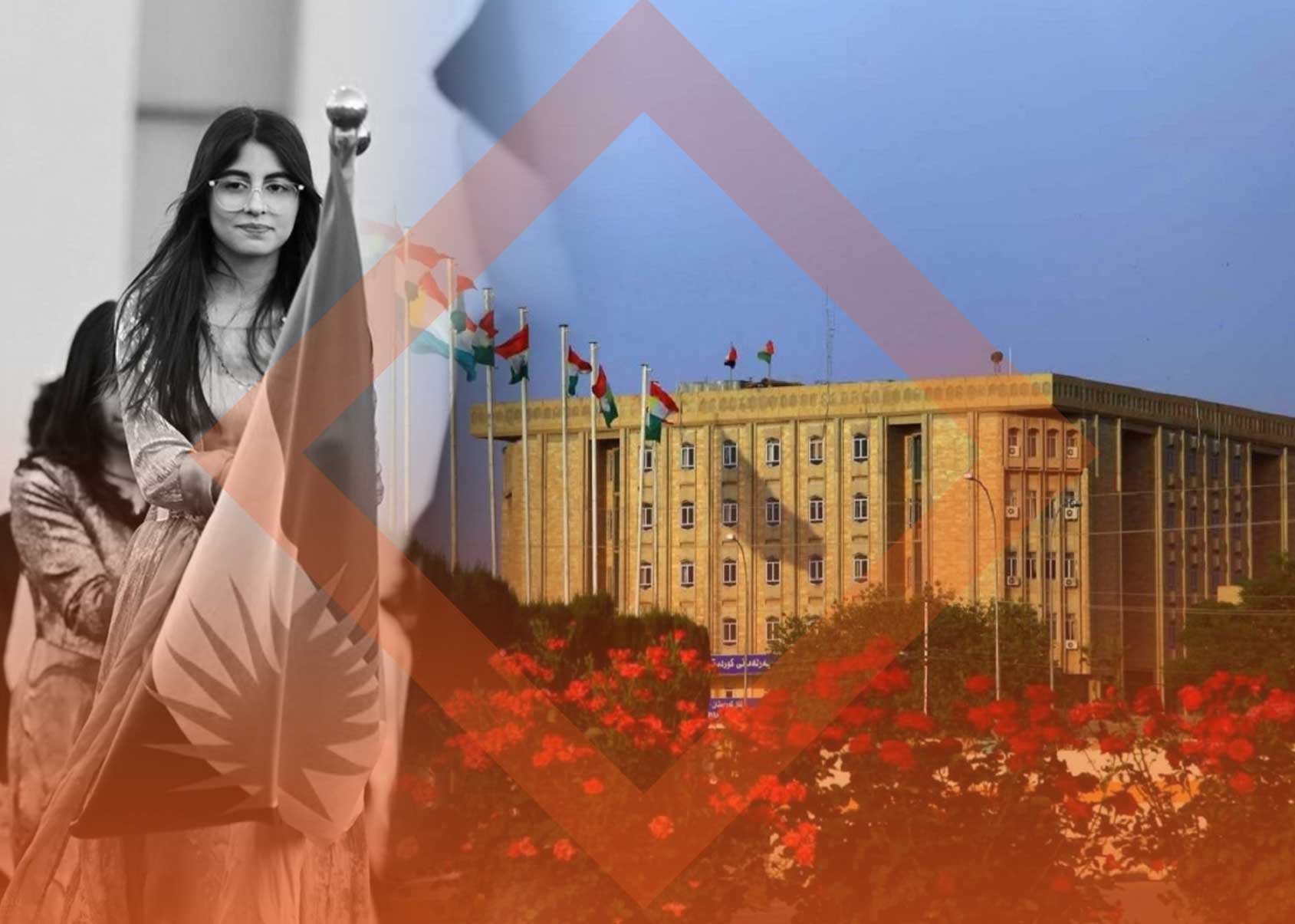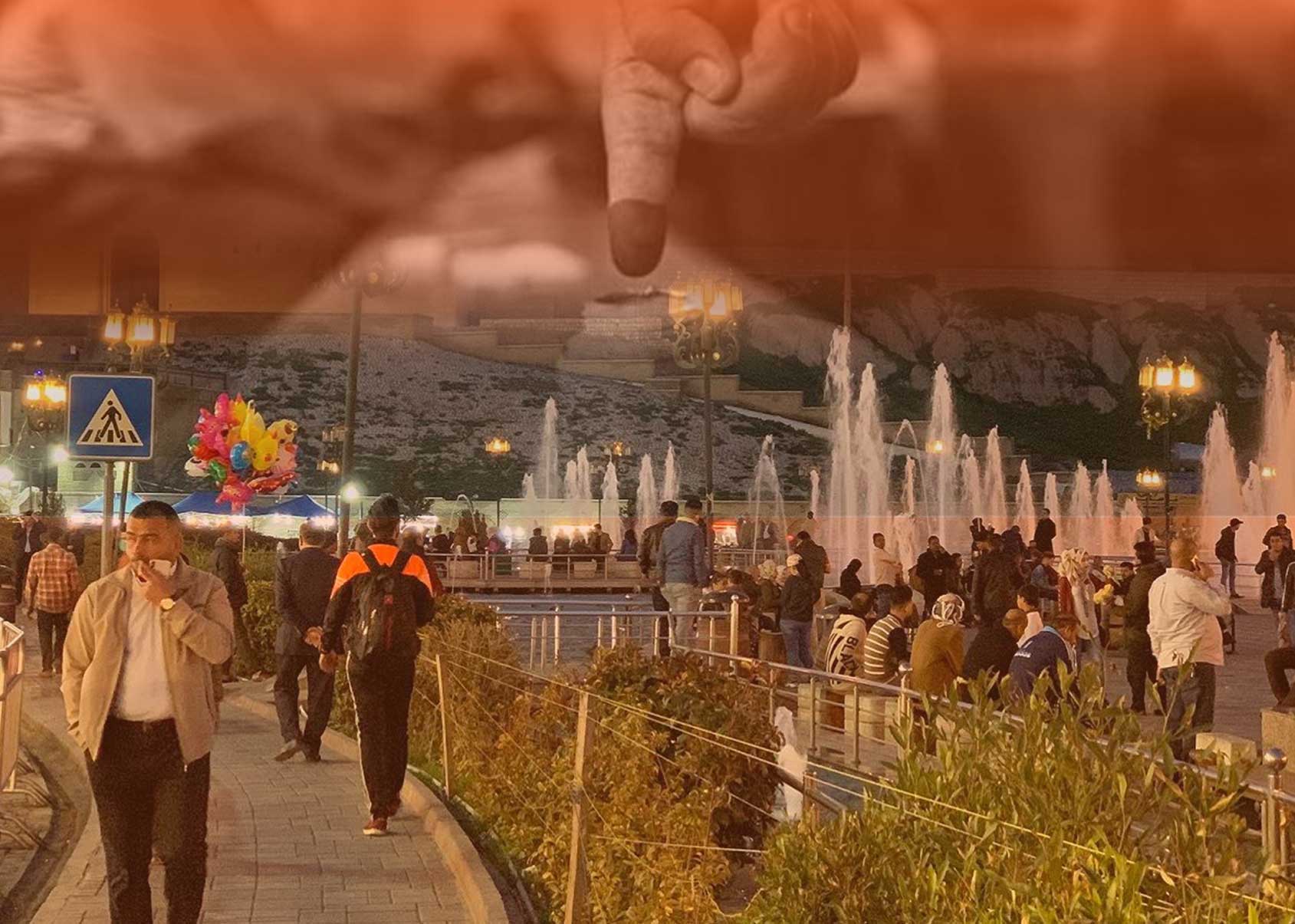Jessica Watkins-
Research Officer-
Middle East Centre, LSE|
Identity Politics & Competing Visions of ‘Reconciliation’ in post-Baathist Iraq
Abstract: The concept of ‘Reconciliation’ has been ever-present in Iraqi politics and society since the ouster of the Baath regime in 2003, so much so that it has entered into the common lexicon as being synonymous with peace and prosperity. Until now, however, there has been no real consensus on what ‘reconciliation’ should look like, still less on how it should be achieved at either national or local levels. This article outlines core strategies behind reconciliation initiatives promoted by international actors as well as the federal government under the Maliki, Abadi and Abdul Mahdi premierships. They have included diverse and at times diverging processes such as granting amnesties to political prisoners; forging elite bargains between representatives of Iraq’s sects; defusing tensions between tribes post-ISIL; and generally promoting inclusive civic engagement. Fundamentally, however, they have never sought to redress the national political power structure and have arguably done much to consolidate the influence of the new Shi’a political class. Despite widespread renewed calls for radically redressing political injustices after the defeat of ISIL in 2017, the official reconciliation file has been side-lined by a federal government paralysed by intra as well as inter-sectarian factionalism. Meanwhile, the paper argues, the new landscape of security and political power-brokers at the provincial levels and below in predominantly Sunni provinces has led to a de facto process of residents in many areas reconciling themselves to the reality of Shi’a dominance.
Introduction
From the 1990s onwards, a number of countries across South America, Africa and the former USSR transitioning from authoritarian towards democratic rule and/or recovering from prolonged intrastate conflict have pursued reconciliation projects. Broadly speaking, these have sought to challenge falsehoods promulgated by former regimes by revising official records of historical events; to hold the perpetrators of gross human rights violations to account; to compensate victims; and accordingly to enable peaceful coexistence between groups that have been polarised, thereby preventing the re-emergence of conflict (Wilson 2003). Reconciliation initiatives take various forms but commonly pursue a combination of judicial, symbolic, normative and strategic measures. And, while in some cases they have been mostly promulgated from the top down by the national government, in others, they have predominantly taken the form of grassroots initiatives (Brounéus, 2008).
The success rates of such projects have been highly uneven. Empirical studies suggest that where a conflict ends with an outright military victory by one side, the prospects for achieving meaningful reconciliation are smaller than when peace is produced through negotiation. International engagement has provided no guarantee of success (and in fact has sometimes proven counter-productive); more decisive has been the level of sincerity of new elites in promulgating initiatives and their willingness to strike a balance between holding human rights abusers (often former senior regime figures) to account, and granting some measure of clemency in order to foster a spirit of compromise. Where reconciliation fails in the first instance, and violence breaks out anew, subsequent attempts to broker peaceful coexistence are complicated by additional sources of grievance which must also be addressed, and this is the scenario that Iraq has faced.
Since the US invasion in 2003, Iraq has undergone a shaky transition from authoritarian rule to democracy, and rhetorically speaking, the notion of national reconciliation has been at the forefront of the political process ever since. And yet, Iraqis and external analysts alike commonly dismiss the reconciliation dossier over the past 17 years as unsuccessful at best, and as a component of the ongoing war-machine at worst. While the initial stated objective of reconciliation was to redress the former regime’s injustices, the formation of the new Iraqi government along consociational (ethno-sectarian) lines, and the outbreak of two sustained periods of inter-sectarian violence (between 2004 and 2008, and 2014 and 2017) has channelled the focus of reconciliation initiatives away from ‘de-Ba’athification’ towards reconciling Iraq’s sects and ethnicities to a new distribution of power. Latterly, ISIL’s targeting of uncooperative Sunnis as well as Shi’a in predominantly Sunni provinces has shifted the focus again, away from attempts to strike grand bargains towards more localised processes of tribal reconciliation, at the same time that the international community has been promoting forms of civic participation to counter violence.
While some of these varied initiatives have enjoyed qualified success in reducing particular tensions, none has fundamentally challenged the new balance of power: nor indeed have they been designed to do so. This article summarises some of the strategies pursued in the name of reconciliation by international actors and the federal government before and after the defeat of ISIL. It works on the assumption that while many of the efforts undertaken have been motivated by a genuine desire to reduce violence, overall, the project has been dominated by figures determined to secure Shi’a ascendancy in Iraq, and to ‘reconcile’ Sunnis to that reality. At the same time, however, it argues the reconciliation file has been subsumed into the broader logic of governance post-2003, in which factionalised clientelism prevails. As a consequence, particularly more recently, the force of identity politics within many reconciliation initiatives has become much less apparent, as more transactional cross-sectarian deals proliferate.
De-Baathification as ‘Reconciliation’
Under the Ba’ath regime (1968-2003), Iraq experienced a succession of horrifically violent events. In addition to the Iran-Iraq War (1981-1987), the Dujail massacre (1982); the genocide of Iraqi Kurds (1986-87), and the brutal repression of the 1991 Uprising, torture of detainees and the exile, execution or assassination of political opponents was a residual feature of governance. In the aftermath of the US-led invasion, reconciliation was high on the political agenda. In the first instance, this was premised on holding senior Ba’athists to account for crimes committed against the population, and on retrospectively claiming rights for tens of thousands of former regime victims and their families.
The De-Ba’athification process occurred through both judicial and extra-judicial processes. Early international suggestions to establish a ‘truth and reconciliation commission’ based on the South African model never materialised, but from May 2003 the Coalition Provisional Authority (CPA) passed a series of laws to ‘de-Baathify’ Iraqi society, including the summary dismissal of the top four tiers of Saddam’s Ba’ath party from public office (an estimated 50,000 individuals), and the dissolution of the army and intelligence services (around 500,000 strong). The Higher National De-Ba’athification Commission (HNDC), under the leadership of Ahmad Chalabi and Ali Faisal al-Lami, served as the primary executing body for the orders, which essentially amounted to a purge. Some amongst the new Iraqi elite condemned the laws for arbitrarily punishing individuals who were innocent of abuses, depriving Iraqi society of essential technical skills, and stirring resentment which might feed the growing insurgency and thereby prevent reconciliation (e.g. Alawi 2003).
By mid-2004, the CPA was attempting to reverse aspects of its policy by allowing some senior ex-Ba’athists to return to the security forces, and others to receive state pensions. Nonetheless, de-Ba’athification policies continued after the handover of sovereignty to the Iraqi Interim Government in 2004, and the HNDC continued to operate, exercising extensive control over political participation and civil service recruitment until 2011 (Sissons & Al-Saiedi 2013). In 2005, the HNDC also intervened into the proceedings of the trial against Saddam (‘the Dujail trial’) by forcing a number of the tribunal employees to be replaced.
Under pressure from the US, in 2006 Nouri al-Maliki’s government committed itself to a reconciliation strategy that included reforming de-Ba’athification policies to make them less extensive and subject to greater accountability. To this end, in 2008, parliament authorised the creation of the Supreme National Commission for Accountability and Justice (AJC), but the HNDC leadership appropriated the new commission. In 2010, the AJC sought to bar over 500 ex-Ba’athist candidates from running in the parliamentary elections (just as the HNDC had sought to bar candidates in 2005). In the event, fierce objections from several political parties resulted in some being re-admitted, but the fact that the majority of those singled out by the commission were Sunni and more ‘secular’-Shi’a added to the sense of Shi’a Islamist political ascendancy in the post-2003 political system.
The trial of Saddam was also billed by the new Iraqi government as part of the post-Ba’athist reconciliation process. In retrospect, however, the infamous circumstances of Saddam’s execution in 2006, when security guards taunted him at the gallows with references to Mohamaed Baqir al-Sadr (a Shi’a cleric executed by the Ba’ath regime in 1980) fuelled sectarian tensions between Iraqi Sunni and Shi’a at a time when hundreds more ex-Ba’athists were being assassinated by Shi’a militias, several of which were associated with Shi’a parties in power.
‘De-Sectarianisation’ as Reconciliation:
While de-Ba’athification measures targeted Iraqi Shi’a as well as Sunnis, a disproportionate number of the senior party members were Sunni. Within months of the US-led invasion, numerous disaffected former regime members joined a growing number of Sunni militant Islamist groups in targeting Coalition forces. Some also turned to targeting the new (predominantly Shi’a) Iraqi security forces and eventually also Shi’a civilians, as a deliberate strategy to securitise sect as the prevailing feature of national identity and thus draw Iraqi Shi’a into civil war. Increasingly, between 2005 and 2008, intra-sectarian violence converted the CPA’s ‘imaginary’ of a sectarian society into a reality.
The broader post-2003 political framework promoted identity politics. The CPA was persuaded by a predominantly ethno-sectarian portrayal of Iraq, in which Arab Shi’a make up roughly 60 percent of the population; Arab Sunnis 20 percent; and Kurds 15 percent. In forming the 25 member Iraqi Governing Council, the CPA observed an elite pact made in 1992 between the seven principal political parties in exile (two Shi’a Islamic parties – Dawa and the Supreme Council for Islamic Revolution in Iraq; one Sunni party – the Iraqi Islamic Party; two Kurdish parties – the Patriotic Union of Kurdistan and the Kurdistan Democratic Party; and two more secular, albeit predominantly Shi’a parties – the Iraqi National Congress and the Iraqi National Accord). Positions were shared out in an ethno-religiously proportionate manner to party figures who claimed to represent their constituencies. Several of these parties subsequently splintered and joined new coalitions, but the system, which came to be known as sectarian apportionment (‘muhassassa ta’ifiyya’) has subsequently governed the allocation of political positions after parliamentary elections in 2005, 2010, 2014 and 2018 (Dodge 2018).
While the Kurds were initially able to leverage a loose alliance with the Iraqi Shi’a Islamic parties to gain concessions on self-rule, the redistribution of power in the post-Ba’athist period left Sunnis politically disenfranchised. And, because dominant political parties used formal access to power as a means of exploiting government resources and maintaining the support of members of their constituencies by giving them access to employment, it excluded them from a significant access to resources. The passage of the new Iraqi constitution in October 2005 was highly unpopular in the predominantly Sunni provinces of Anbar, Salah al-Din and Ninawa. This was mostly because of the extensive provisions it made, at the behest of Kurdish and indeed many Shi’a representatives, for the formation of semi-autonomous region, where most Sunnis were concerned with preserving a unified Iraq (Jawad 2013: 15). Few Sunnis voted in the 2005 elections, and major Sunni Parties including the Iraqi Islamic Party and the Association of Muslim Scholars boycotted. Though some Sunni politicians were drawn into the new government, several were later charged with terrorist activities.
The informal nature of consociationalism in Iraq has meant that periodic decisions made by the new Shi’a political elite to engage with or patronise particular Sunni leaders at the national and sub-national levels since 2005 have regularly been cast as attempts to achieve reconciliation between Iraq’s sects, despite the fact that there has been no move to fundamentally redress the balance of power. Under the first Maliki administration (2006-2010), the theme of national reconciliation (predominantly between Sunnis and Shi’a) was incorporated into the machinery of government and politicised patronage. The main operational arm was the Implementation and Follow-Up Committee for National Reconciliation (IFCNR), established in June 2007 and headed by Muhammad Salman al-Saadi. It was occupied with vetting former regime members, disarming militias, maintaining relations with Sunni tribal ‘Awakening’ Councils (the Sahwat) in Anbar which had joined US forces and the Iraqi army to combat al-Qa’ida and with tribal support councils in other areas. It also worked on internally displaced persons, improving access to basic services, and job creation for ex-combatants (Eisendstadt & Ali: 2009). Millions of dollars were also dedicated to national reconciliation conferences, which were boycotted by key political actors.
In 2010, the second Maliki administration even created a National Reconciliation Ministry, headed by Amer al-Khuza’i. The ministry was soon dissolved due to lack of funding, but Khuza’i continued to control a large budget as the Prime Minister’s special advisor on reconciliation. At a more granular level, between 2010 and 2013, the government granted amnesties to over 3000 Sunnis belonging to Salafi, Sufi and Ba’athist militant groups (excluding al-Qa’ida and Ansar Islam), as well as a number of Shi’a militant groups. But the bulk of Khuza’i’s budget was theoretically earmarked for paying the Sahwat paramilitary groups who expected to be eventually incorporated into the Iraqi army. Even after prospects for integration dwindled, however, and the reconciliation project stopped paying their salaries, it reportedly continued to claim them as a part of its budget (al-Jaffal 2014).
The ease with which Islamic State militants seized large swathes of territory across Sunni-dominated provinces of northern Iraq in mid-2014 without significant military resistance from the local population reflected the extent to which Sunnis in those areas felt marginalised from national politics and particularly Nouri al-Maliki’s government. When Maliki eventually ceded to mounting pressure to resign in light of ISIL’s advances, his replacement, Hayder al-Abadi adopted a more circumspect approach to national reconciliation. He scaled down expenditures on reconciliation projects and declined to implement a comprehensive strategy proposed by Salman al-Saadi to be implemented across government departments with the assistance of international agencies. In August 2016, parliament passed the General Amnesty Law, which Sunni politicians had called for over many years to enable Sunnis imprisoned for political reasons on terrorist legislation introduced by the Maliki government to apply for amnesty. But the loopholes in the law were so numerous that critics claimed it would most likely benefit thieves, kidnappers, and ‘real’ terrorists (Habib 2016). In the words of one Iraqi political commentator at the height of the ISIL crisis, ‘the reconciliation file entered into a cycle of indifference, from which it could not be revived’ (Saheb 2014).
After ISIL: National & Sub-National Visions of Reconciliation
Towards the end of the long military counter-offensive against ISIL (2015-2017), a renewed impetus for promoting reconciliation in Iraq at the sub-national level emerged domestically and within the international community. The fact that many of ISIL’s victims were Sunni provided grounds for cross-sectarian mobilisation, and ISIL’s defeat was broadly seen as a crucial moment in which to steer Iraq away from sectarian strife. In practice, the two visions of reconciliation which have been most noticeable (one through a more integrative model of civic participation, the other through tribal settlements) arguably point to quite different political imaginaries.
Reconciliation through Civil Society: In the aftermath of ISIL, the focus of most international development agencies has been on promoting the growth of Iraqi civil society, understood as a networks of voluntary associations and activities) as a means of sidelining tensions premised on identity politics and clientelism premised on sectarian, ethnic and tribal affiliations. This hitherto elusive goal concentrates on localised, grassroots efforts and public awareness training as opposed to agreements between political elites. In January 2017, for example, the United Nations Development Programme (UNDP) partnered with the IFNRC to launch the ‘Support for Integrated Reconciliation in Iraq’ project. Its principal activities included establishing Local Peace Committees (LPCs) to enhance social cohesion and coexistence and providing support to victims of ISIL (UNDP 2017). The LPCs have had mixed success. Often, they are dominated by figures in local government, and end up playing a parallel role to district councils as opposed to a role of scrutiny.
The international development approach has been partially mirrored by the Iraqi government’s official treatment of the reconciliation file. Rather than broadcasting grand political bargains between elites which invariably fail within the rubric of reconciliation (especially after aspirations for Kurdish independence were dashed when the government of Iraq rejected the referendum in 2017) the government, via the Office of National Reconciliation (ONR) has focused more on educational and cultural projects. In 2018, after the formation of the new Iraqi government the ONR was replaced by the Higher Committee for Coexistence and Social Peace. This new body undertakes some of the same duties as its predecessor but is linked to the Office of the Prime Minister rather than the Council of Ministers and according to some of the peacebuilding organisations that work with it, it lacks the executive clout to impose the necessary policy changes on government.
Reconciliation through Tribal Settlements: Many of Iraq’s reconciliation initiatives, even pre-ISIL, have had a tribal element to them. The Maliki administrations in particular favoured engagement with Sunni tribal leaders as a means of bypassing other administrative structures and figures of public authority. Moreover, the heartlands of Sunni militant Islamist groups including Al-Qa’ida in Iraq and ISIL have been in parts of the country where tribal affiliations remain strong, and have indeed been further strengthened by the state’s inadequate provision of basic services. Just as militant groups have used tribal structures as a means of recruitment, so these structures have been mobilised to counter them. The Sahwa councils that US forces promoted in Anbar from 2007 were an obvious early example of this, and post-2014, the Iraqi security forces and predominantly Shi’a Popular Mobilisation Forces (PMF) also made alliances with anti-ISIL tribal paramilitary groups in Salah al-Din, Ninawa, Diyala and Kirkuk as well as Anbar.
In the aftermath of ISIL, however, and in the absence of a robust civil legal system, tribal reconciliation practices have become instrumental in negotiations to return internally displaced populations who were in some way associated with ISIL to their homes. The term ‘reconciliation’ (musalaha) is integral to tribal justice processes, and without it, revenge attacks by the relatives of victims against the relatives of perpetrators are common. Where fatalities or severe injuries have been incurred, reconciliation is usually dependent on the payment of blood money as a form of compensation for the families of victims, and sometimes also on the exile of close relatives of the perpetrator.
These negotiations have taken place between Sunni and Shi’a tribes, but also between Sunni and Sunni tribes, and within tribes of mixed sect. For the most part, they operate according to a different logic than that associated with western conceptions of civil society: they are based on a highly patriarchal and exclusionary understanding of kinship, in which women’s views are largely peripheral. Tribal musalahat generally pertain to restricted geographical areas, but it is misleading to see them as intrinsically ‘local’ practices. National and provincial as well as local figures of religious, political and military authority frequently intervene to broker agreements, often motivated by the prospect of garnering more supporters, if not by the potential to derive financial gain from acting as intermediaries for payments made by one tribe to another. In some cases, Iraqi civil society actors (often with international backing) have also intervened into seemingly intractable conflicts between tribes in ‘liberated’ parts of the country. But more often, it has been the PMF that have assumed control over security in Sunni areas who have claimed decisive roles in such agreements, and indeed, have cultivated alliances more broadly with a new cadre of Sunni leaders who, unlike their predecessors, are prepared to accept Shi’a dominance in the political sphere.
Conclusion
Iraq’s reconciliation file has become infinitely more complex with each new cycle of violence that has engulfed the country since 2003. The question of who should be reconciling with whom and on what basis continues to plague policymakers and public alike.
On the one hand, in post-ISIL Iraq, Shi’a dominance is a fait accompli. The government has shut down Kurdish calls for independence and outlawed or discredited much of the previous Sunni political leadership. The state’s judicial processes have shown no mercy towards ISIL members and sympathisers; relatives of ISIL have been left to languish in segregated displacement camps, and residents of a number of predominantly Sunni areas have had little option but to seek the protection of Shi’a militias. Victims of ISIL are eligible to apply for compensation through Law No. 20 (for Victims of Military Operations, Military Mistakes and Terrorist Actions), but victims of alleged human rights abuses committed by the ‘liberating’ forces (the PMF and the Iraqi security forces) have had little recourse to justice. This creates obvious fears that future attempts to revive the insurgency in Sunni areas will attract more popular support, although this will presumably depend on the success of ongoing regeneration projects in those areas, and the nature of relationships cultivated between local populations and ‘liberators’.
On the other hand, the protests that began in predominantly Shi’a areas across southern Iraq and in the capital in 2015 and resumed in October of last year have attempted to force a political agenda that is focused on issues, not ethno-sectarian identities. And there are certainly indications that identity politics have lost some of their potency as a driving force behind reconciliation projects. Increasingly, the administrative framework for implementing reconciliation initiatives has been drawn into the network of clientelistic relations that characterizes Iraqi politics. Growing factionalism between various members of the governing Shi’a political alliance has opened opportunities for cross-sectarian alliances. Rather than pointing to an era where issues politics replaces identity politics, however, this trend of transactional deal-making seems rather more indicative of the demise of party politics in Iraq.
References
Allawi, Ayad. (2003) ‘Anti-Baathist policy undermining reconciliation in Iraq’, 31 December 2003. https://www.irishtimes.com/opinion/anti-baathist-policy-undermining-reconciliation-in-iraq-1.402986
Brounéus, Karen. (2008) ‘Analyzing reconciliation: A structured method for measuring national reconciliation initiatives.’ Peace and Conflict: Journal of Peace Psychology 14, no. 3: 291-313.
Dodge, Toby. (2008) ‘Iraq and Muhasasa Ta’ifia; the external imposition of sectarian politics’ 12 November 2008. https://fpc.org.uk/iraq-and-muhasasa-taifia-the-external-imposition-of-sectarian-politics/
Eisenstadt, Michael & Ahmed Ali (2009), ‘How This Ends: Iraq’s Uncertain Path toward National Reconciliation’, 17 July 2009, The Washington Institute, https://www.washingtoninstitute.org/policy-analysis/view/how-this-ends-iraqs-uncertain-path-toward-national-reconciliation
Habib, Mustafa (2016), ‘Iraq’s New Amnesty Law So Full of Loopholes, Terrorists Could Be Freed’, Niqash, 5 Oct 2016, https://www.niqash.org/en/articles/politics/5371/
Jabar, Falah, (2017), From Identity Politics to Issue Politics – The Iraqi Protest Movement. The End of Conformity, the Beginning of Accountability. http://iraqieconomists.net/en/2017/01/28/from-identity-politics-to-issue-politics-the-iraqi-protest-movement-the-end-of-conformity-the-beginning-of-accountability-by-faleh-a-jabar/
Jafal (Al-), Omar. (2014). ‘An Engine of War Called National Reconciliation’, Al Safir Al Arabi , 2 October 2014, https://www.internationalboulevard.com/an-engine-of-war-called-national-reconciliation/
Jawad, Saad (2013) ‘The Iraqi constitution: structural flaws and political implications’, LSE Middle East Centre Paper Series, 01. LSE Middle East Centre, London, UK
Saheb, Mazen (2014), ‘Iraqi Reconciliation: between the Mecca Doccument and the Treaty of Westphaelia… A new search’ Al-Quds, https://www.alquds.co.uk/%EF%BB%BFالمصالحة-العراقية-بين-نموذجي-وثيقة-م/
Sissons, Miranda, and Abdulrazzaq Al-Saiedi (2013). ‘A bitter legacy: Lessons of de-Baathification in Iraq.’ International Center for Transitional Justice 3.
UNDP, (2017) ‘Support for Integrated Reconciliation in Iraq’, 30 October 2017, https://www.iq.undp.org/content/iraq/en/home/operations/projects/democratic_governance/reconciliation.html
Wilson, Richard. A. (2003). Anthropological studies of national reconciliation processes. Anthropological Theory, 3(3), pp.367-387.






